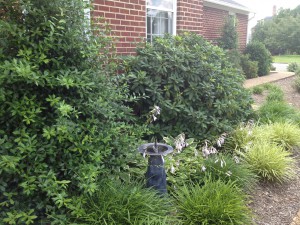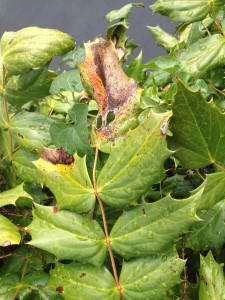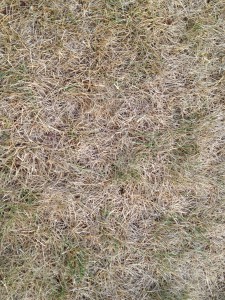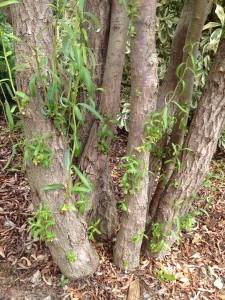Wow! What a wet summer we have had this year. I can’t remember a time when everything was so green in July. Pruning in the middle of summer is not something that I would normally recommend for most plants, but some, like the holly bushes, have grown to extremes in the wet season we have been experiencing. I have several in my garden that were planted by the builder 30+ years ago. These were unfortunately planted too close to the house and front porch to let them grow to their natural size, so they require a pruning 4 or 5 times a year to keep them in check. (I had actually cut them down to the ground when we first purchased the house because they were so out of control. They regenerated in about a year!) The good news is that if you know the proper way to prune them, hollies can be terrific foundation plants and showy all year. Here’s how-
First, always inspect the interior closely. I have birds that build nests in mine, and I don’t want to just start trimming away! The birds love evergreen bushes for nests, so always check each bush before pruning or spraying.
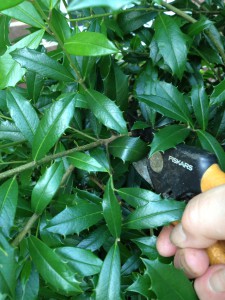
Always prune with shears. They create a more natural look than a hedge trimmer. The new leaves are pretty soft, but wear gloves if you are working with the old growth — it can get very sharp!
Next, set the height that you want. In my case, I have a bush on either side of my front door and want them to match, so I use a mortar line in the brick as my guide to determine where to make that first cut. Using sharp pruners, make a cut just above a leaf to establish the height.
Then determine how wide the bush should be, and what sort of shape you want. I like a more natural look, so I chose a cone shape. If you have trouble keeping the shape, a handy tip is to tie a string from top to bottom to use as a cutting guide moving it around the bottom edge as you go. I don’t like the look of anything too crisply trimmed; I prefer a more fringe-like or loose shape. I then trim up the sides to the top being careful not to trim the leaves in half. They will brown and look unhealthy if you do. For that reason, never use a hedge trimmer — EVER! Sharp pruning shears are the right tool for this job.
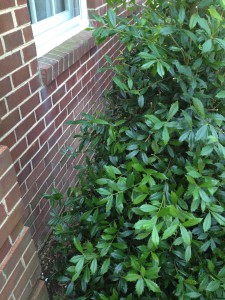
Always try to leave some “breathing room” behind your foundation plantings for air circulation as well as security.
Once you have gotten the basic shape, trim back every third branch several inches inside the bush. This will encourage lots of leaves to grow throughout the plant, not just on the tips. It will also allow air circulation and light to get inside the plant, lessening the chances of disease and insects. One final step is to make sure that you have pruned far enough back from the walls of your house. Try to keep all bushes at least a 12 to 18 inches away from your house to allow some breathing space, and also trimmed away from under windows for views and security.
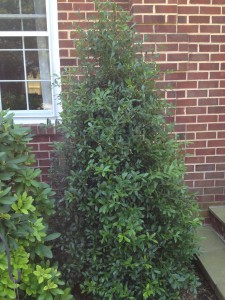
Here is the “After” picture. Nice fringe-like texture, with branches full of leaves makes for a healthy holly.
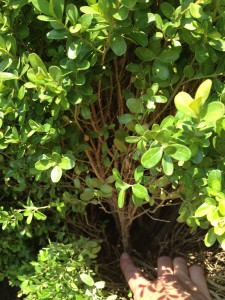
When shaping boxwood trim out the entire branch all the way to the base. It will encourage healthy new growth from the center of the plant.
This is also a good time to give attention to the new growth on boxwoods. Just trimming the really heavy branches, by removing them down to the base of the branch, is all that is needed. This is something I do only about every other year because they are fairly slow growing. For the juniper and euonymus, I only trim the branches that have grown too far out of bounds right now; they will get a more substantial shaping when the weather cools.
I hope you are having a wonderful summer in your garden! Let me know what is your favorite plant this growing season — I’d love to hear! I will leave you with my favorite right now: a view of my daylilly garden in full bloom.

